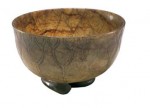Posts Tagged ‘Made in China’
Tools of the Cooking
 Humans evolved from the primitives, who plucked the hairs and feathers from animals and drank blood, into intelligent and skillful beings that can make today’s gourmet foods. Gone were the days of seizing food with bare hands, people now dine with chopsticks, knives, forks and spoons. Apparently, changes in the ways of eating and dining utensils can reflect the path of human evolution, from a primitive state to modern men. The cooking and dining utensils of the Chinese have an inseparable connection with their culinary techniques and dietary habits. Today, people can learn about history through artifacts and a written language that were passed down through the generations. Chinese dining ware has gone through changes in material, from stone and pottery to bronze, iron and other metals. The one form of “made in China” product that is well known throughout the world is porcelain, or fine china. As productivity levels heightened, dining utensils not only
Humans evolved from the primitives, who plucked the hairs and feathers from animals and drank blood, into intelligent and skillful beings that can make today’s gourmet foods. Gone were the days of seizing food with bare hands, people now dine with chopsticks, knives, forks and spoons. Apparently, changes in the ways of eating and dining utensils can reflect the path of human evolution, from a primitive state to modern men. The cooking and dining utensils of the Chinese have an inseparable connection with their culinary techniques and dietary habits. Today, people can learn about history through artifacts and a written language that were passed down through the generations. Chinese dining ware has gone through changes in material, from stone and pottery to bronze, iron and other metals. The one form of “made in China” product that is well known throughout the world is porcelain, or fine china. As productivity levels heightened, dining utensils not only  underwent changes in material and craftsmanship, but also a typical change from large to small, rough to delicate, and thick to thin.
underwent changes in material and craftsmanship, but also a typical change from large to small, rough to delicate, and thick to thin.
The earliest cooking utensils included earthenware ding, li, huo, zeng, yan and more. Later came more elegant and larger successors to these utensils with the same names, but made from bronze and iron. Some of these cooking utensils doubled as vessels for food, such as the ding that was used to both cook and hold meat. Usually large in size, the ding is usually round in shape and has three pedestals for support; certain ones are square with four pedestals. Between the pedestals, firewood and fuel can be placed for direct burning and heating. On either side of the upper exterior of the ding is a handle for easy carrying. In the Bronze Age, the function of the ding changed as some were used as important tools in sacrificial rites. Li is used for cooking porridge (congee). It is similar in shape to the ding but smaller in size. Its three pedestals are hollowed and connect to the belly. The food in the hollowed legs therefore can be heated and cooked more quickly. Huo is specially used for cooking meats, and is more advanced than the ding. It has a round belly but no feet, more akin to the “wok,” which came at a later time. The zeng is used for steaming food. Its mouth folds outward and has handles. The bottom is flat with many apertures for the passage of steam. Some zengs have no bottom, but instead has a grating underneath. When in use, the zeng is placed over the li, a cooking tripod filled with water. What merged the zeng and li together is the yan. The Chinese have had earthenware zeng since the late Neolithic Age. After the Shang Dynasty (around 17th to 11th century B.C.), there appeared zengs made of bronze.